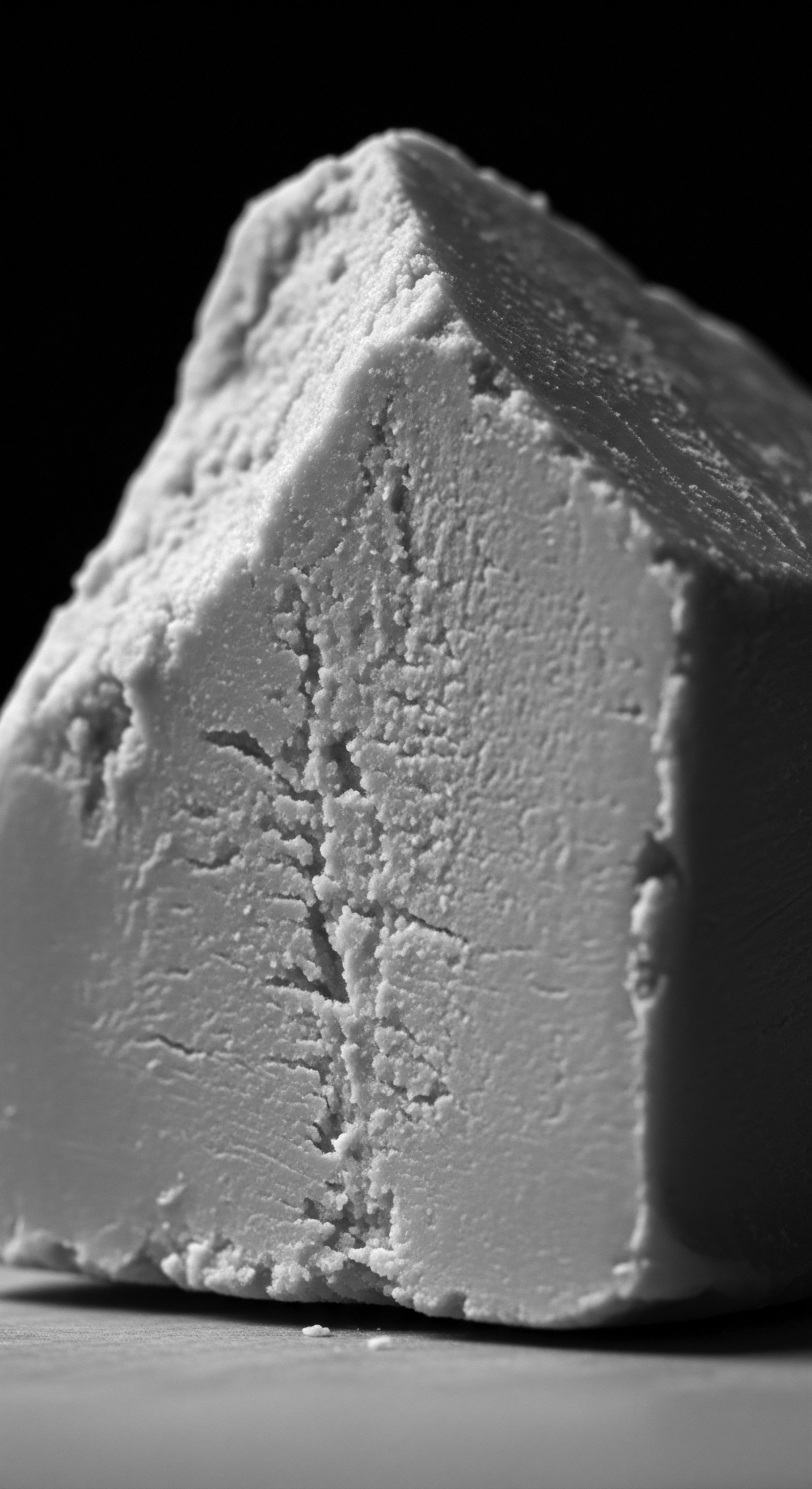
Roots
The story of textured hair, with its coils, curls, and waves, is a narrative deeply intertwined with the human journey itself. It is a story not solely of biology, but of profound cultural resonance, echoing through centuries and across continents. When we consider what traditional ingredients protect textured hair, we are not simply cataloging botanical extracts; we are opening a living archive of ancestral wisdom, a testament to resilience and ingenuity that has sustained communities for generations. This exploration begins at the very source, in the fundamental understanding of textured hair’s unique architecture and its relationship with the earth’s offerings.
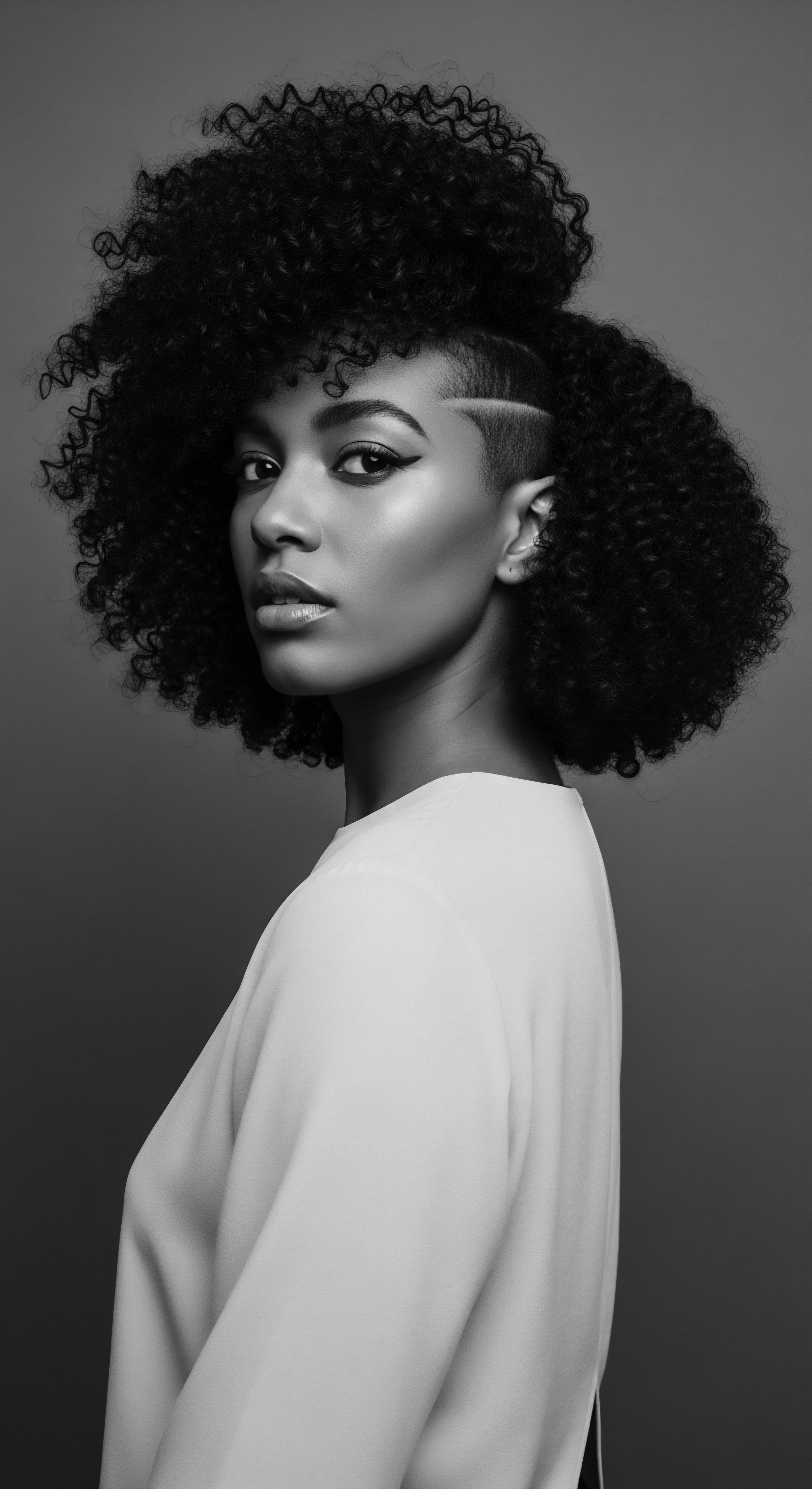
The Hair’s Intrinsic Design
Textured hair possesses a distinct helical structure, a biological marvel that grants it its unique beauty and demands particular care. Unlike straight strands, which typically have a round cross-section, coily and curly hair often presents an elliptical or flattened shape. This structural variation, coupled with a higher number of disulfide bonds and a tendency for the cuticle layers to lift more readily, creates a surface that is more porous and prone to moisture loss.
This inherent characteristic, a gift of genetic heritage, means that textured hair requires a protective approach to maintain its integrity and vitality. Understanding this foundational biology allows us to appreciate the ancestral solutions that emerged from observing hair’s natural inclinations.
Through generations, communities observed the natural world, identifying elements that offered solace and strength to these delicate, yet powerful, strands. This knowledge was not theoretical; it was born from daily practice, from the sun, the wind, and the need for sustenance. The very classification of textured hair, while a modern scientific endeavor, finds its parallel in the nuanced understanding held by those who lived intimately with these hair patterns for millennia. Terms like ‘kinky,’ ‘coily,’ and ‘curly’ carry contemporary weight, yet their roots lie in observations passed down through time, long before formal categorization.
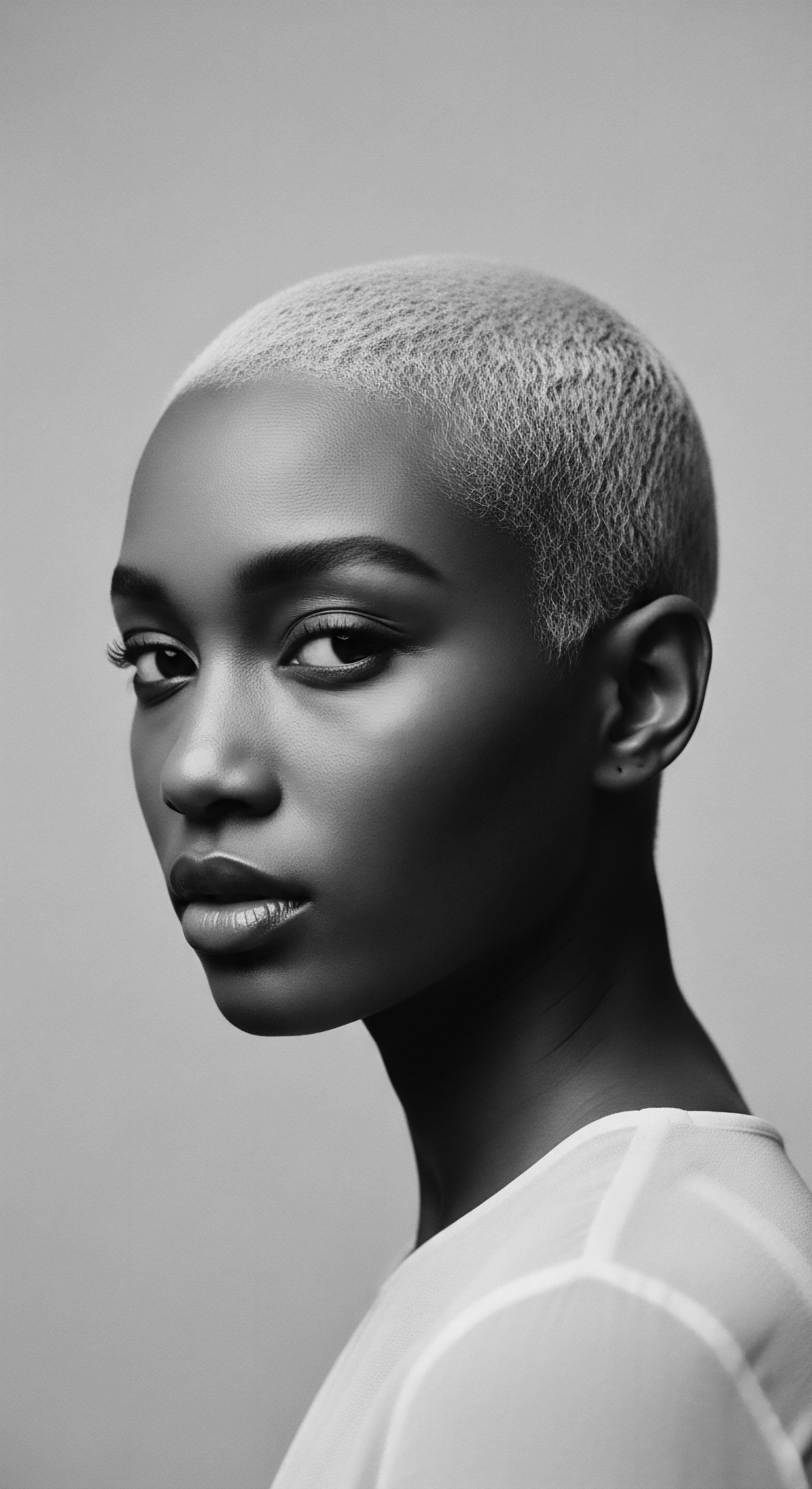
Echoes from the Source ❉ Ancestral Hair Science
Long before microscopes revealed the secrets of the cuticle, ancestral communities possessed a sophisticated, empirical understanding of hair health. Their “laboratories” were the lush forests, arid plains, and vibrant markets where indigenous plants and minerals were gathered. The knowledge of what traditional ingredients protect textured hair was a communal inheritance, honed by trial and error, and perfected through ritual. This deep connection to the land and its bounty provided the first line of defense against environmental stressors.
Ancestral knowledge, rooted in intimate observation of the natural world, laid the groundwork for understanding textured hair’s unique needs and the protective power of traditional ingredients.
Consider the shea tree (Vitellaria paradoxa), indigenous to West and Central Africa. For centuries, its butter has been a cornerstone of hair and skin care across the continent. Women in the shea belt, a region spanning countries like Burkina Faso, Ghana, and Mali, have passed down the intricate process of extracting this rich, ivory-colored fat from the shea nut.
This butter, high in fatty acids and vitamins A and E, forms a protective barrier, shielding hair from the harsh sun and drying winds. Its traditional use is not merely cosmetic; it is a vital practice for survival in challenging climates, preventing moisture loss from strands prone to dryness.
Another remarkable example is chebe powder , originating from the Basara Arab women of Chad. This blend of natural herbs, seeds, and plants—including Croton zambesicus, Mahllaba Soubiane, cloves, resin, and stone scent—has been used for generations to cultivate exceptionally long, strong hair. The Basara women traditionally coat their hair with a paste made from chebe powder mixed with oils or butters, then braid it, leaving it for days.
This method, passed down through community rituals, helps retain length by preventing breakage and sealing in moisture, particularly beneficial for kinky and coily hair types that are often drier and more susceptible to damage. The efficacy of chebe powder in length retention, not necessarily growth from the scalp, speaks to a deep understanding of protective barriers for fragile strands.
| Traditional Ingredient Shea Butter (Karité) |
| Ancestral Origin and Cultural Significance West and Central Africa; revered as "The Sacred Tree of the Savannah." Its extraction is a communal practice, often by women. |
| Protective Function for Textured Hair Forms a protective barrier against environmental stressors (sun, wind), seals in moisture, reduces breakage, and offers emollient properties. |
| Traditional Ingredient Chebe Powder |
| Ancestral Origin and Cultural Significance Chad, used by Basara Arab women. A symbol of identity and tradition, passed down through generations in community rituals. |
| Protective Function for Textured Hair Coats the hair shaft to reduce breakage and split ends, locking in moisture, thereby promoting length retention for coily textures. |
| Traditional Ingredient African Black Soap (Ose Dudu, Alata Simena) |
| Ancestral Origin and Cultural Significance West Africa, particularly Yorùbá communities. A cleansing staple with historical medicinal and cosmetic uses. |
| Protective Function for Textured Hair Gently cleanses the scalp and hair without stripping natural oils, aiding in maintaining the hair's natural moisture balance and preparing it for protective treatments. |
| Traditional Ingredient These ingredients represent a profound ancestral legacy of hair care, providing protection through natural means. |
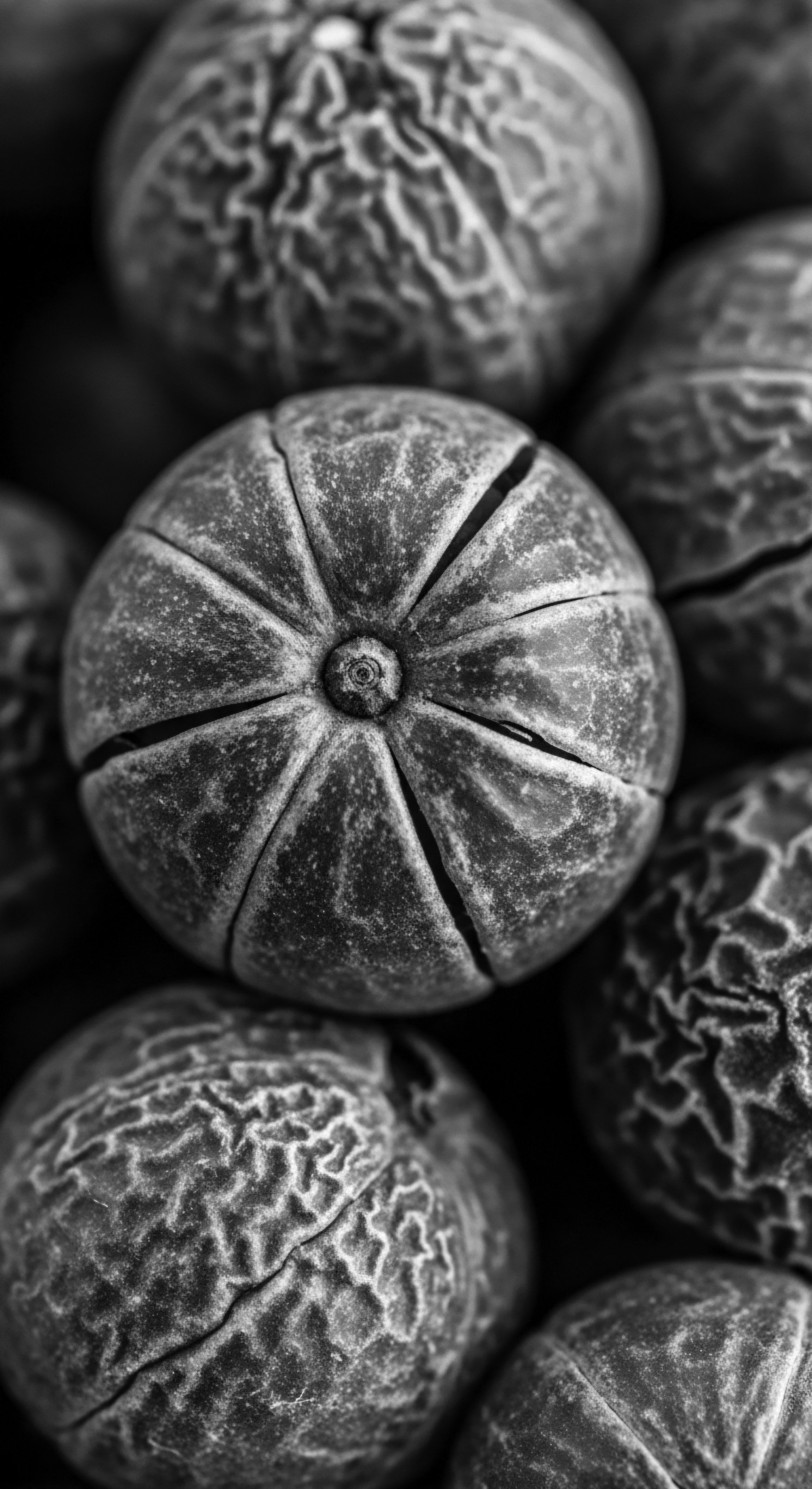
Hair’s Elemental Lexicon and Its Guardians
The language of textured hair care, in its traditional context, was woven into daily life. It was a lexicon of observation, handed down from elder to child, mother to daughter. This living vocabulary described not just the hair’s visual appearance but its feel, its response to moisture, and its needs. The terms used were often descriptive of the ingredient’s direct effect or its source in nature.
- Botanical Butters ❉ Rich, dense extracts from seeds or nuts, offering deep conditioning and sealing properties. Think of shea, cocoa, or mango butter, each with a heritage of use.
- Plant-Derived Oils ❉ Liquid gold from various plants, providing lubrication, sheen, and scalp nourishment. Coconut, castor, olive, and moringa oils carry ancient lineages of care.
- Herbal Powders ❉ Finely ground plant matter, often used for cleansing, strengthening, or stimulating the scalp. Amla, reetha, shikakai, and chebe are celebrated examples.
The protective qualities of these ingredients often relate to their ability to create a physical barrier, their humectant properties (drawing moisture from the air), or their rich content of fatty acids and vitamins that nourish the hair at a cellular level. This ancient understanding, now validated by modern scientific inquiry, forms the very foundation of what traditional ingredients protect textured hair.
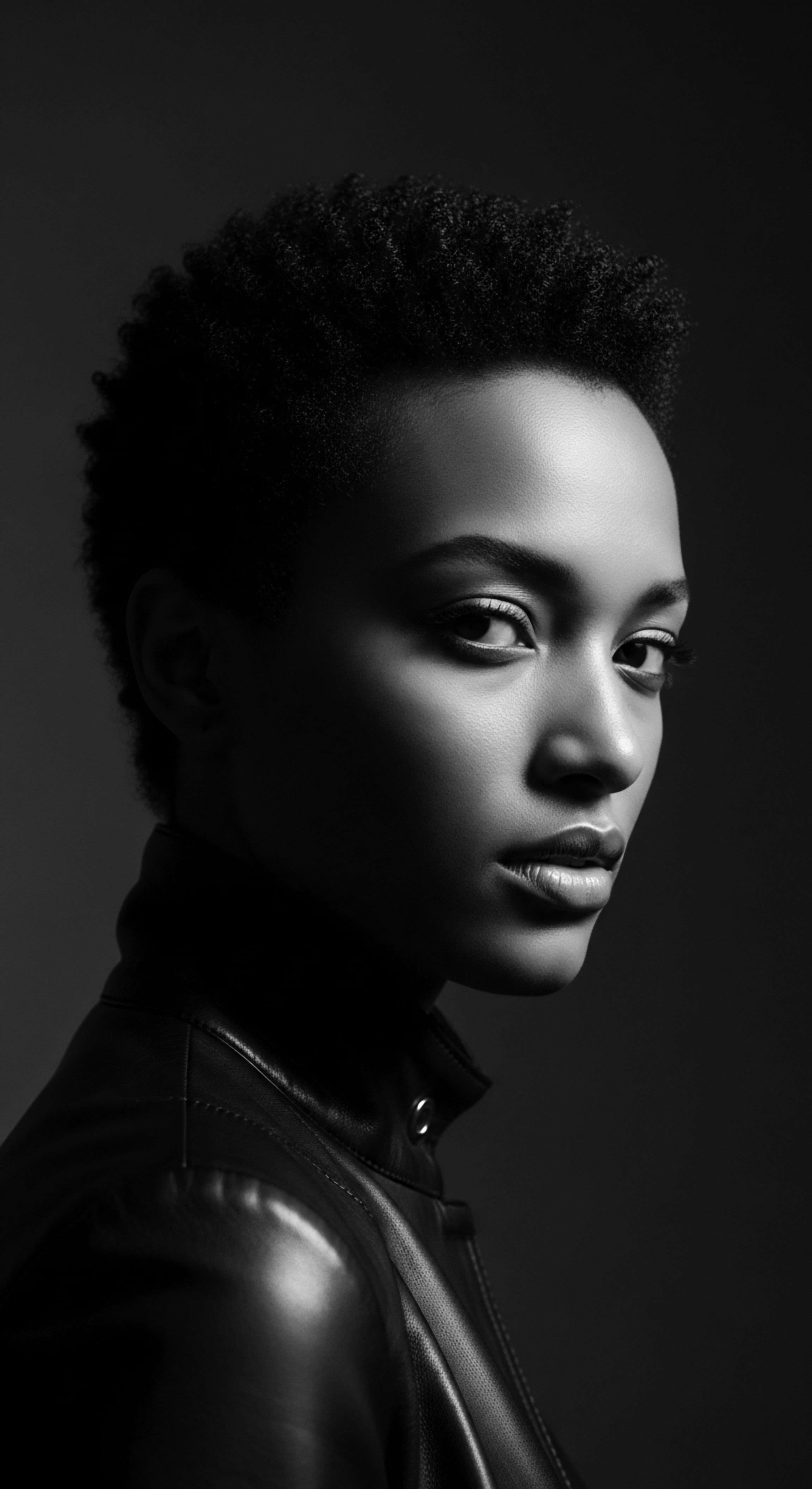
Ritual
Stepping beyond the foundational understanding of textured hair’s biology, we now approach the living practice, the tender rituals that have shaped generations of care. The inquiry into what traditional ingredients protect textured hair naturally leads us to the heart of ancestral and contemporary practices, where technique and material intertwine. This space is one of shared knowledge, where gentle guidance and reverence for tradition illuminate the paths to vibrant hair health.
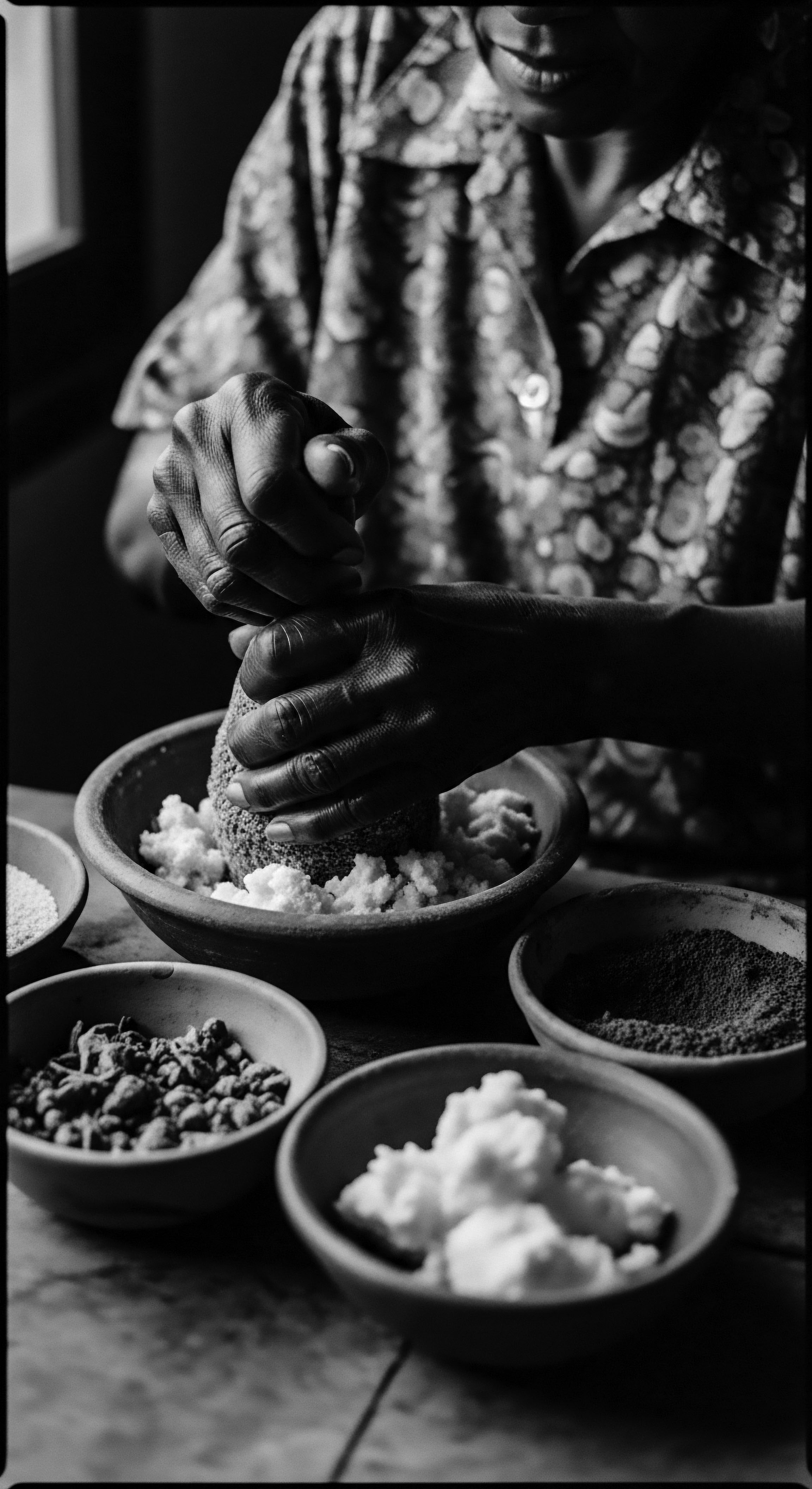
The Sacred Act of Care
For many Black and mixed-race communities, hair care is not merely a routine; it is a ritual, a sacred act connecting the individual to their lineage and identity. These rituals, often communal, serve as vessels for cultural memory, transmitting not only methods but also stories, songs, and values. The application of traditional ingredients is embedded within these practices, transforming a simple act of conditioning into a moment of cultural affirmation. The hands that detangle, the fingers that braid, the voices that share wisdom—all contribute to a holistic experience of care.
Consider the widespread practice of hair oiling. Across West African traditions, oils and butters were consistently applied to hair to maintain moisture in hot, dry climates. This practice was often paired with protective styles to maintain length and health.
This deep conditioning, far from a fleeting trend, is a continuation of centuries-old wisdom. The oils penetrate the hair shaft, reinforcing its structure, while the act of massaging the scalp stimulates circulation, fostering a healthy environment for growth.
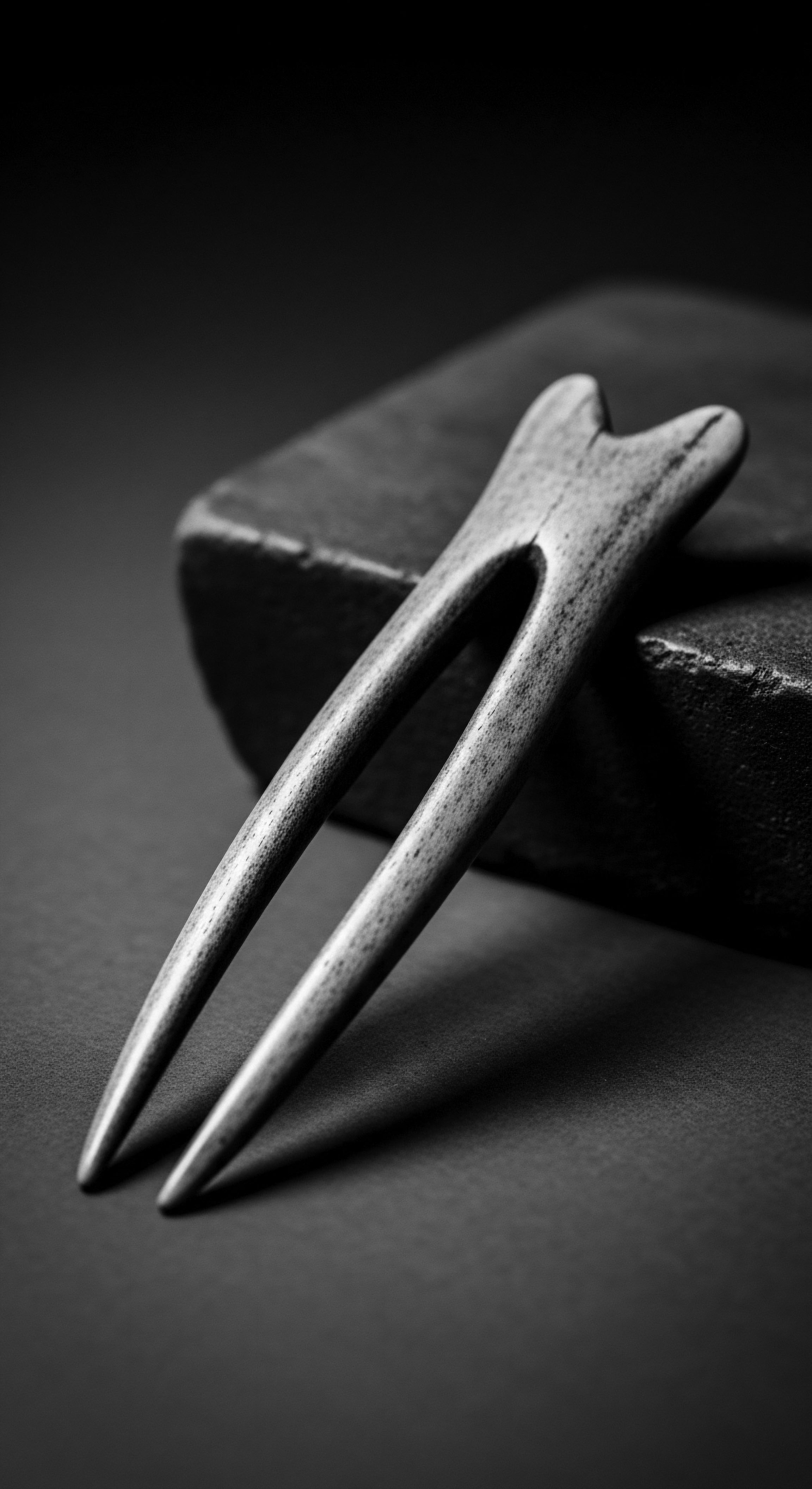
Ancient African Oiling Practices
The application of oils was often a methodical, deliberate process, reflecting a deep respect for the hair itself.
- Sectioning and Detangling ❉ Hair was carefully divided, often with wooden combs or fingers, to ensure even distribution and minimize stress on the strands. This gentle approach prevented breakage, a common concern for textured hair.
- Warm Oil Application ❉ Oils were often warmed slightly, enhancing their penetration and providing a soothing sensation to the scalp. This warmth opened the hair cuticles, allowing the beneficial compounds to absorb more effectively.
- Scalp Massage ❉ The oil was massaged into the scalp, stimulating blood flow to the follicles, which supports hair health and growth. This practice also distributed natural oils, balancing the scalp’s environment.
- Sealing and Styling ❉ After oiling, hair was often braided, twisted, or styled into protective forms. This sealed in the moisture and reduced exposure to environmental elements, preserving the hair’s condition.
This structured approach to oiling, particularly evident in the systematic application of ingredients like palm kernel oil (also known as West African Batana Oil), speaks to a sophisticated understanding of hair’s needs. Palm kernel oil, rich in lauric acid, vitamins A and E, and essential fatty acids, was traditionally used to nourish the scalp, strengthen follicles, and reduce thinning. Its ability to penetrate the hair shaft deeply helped restore moisture, elasticity, and shine, combating dryness and brittleness.
Hair care rituals, steeped in ancestral practices, elevate the application of traditional ingredients from mere routine to a profound act of cultural preservation and self-affirmation.
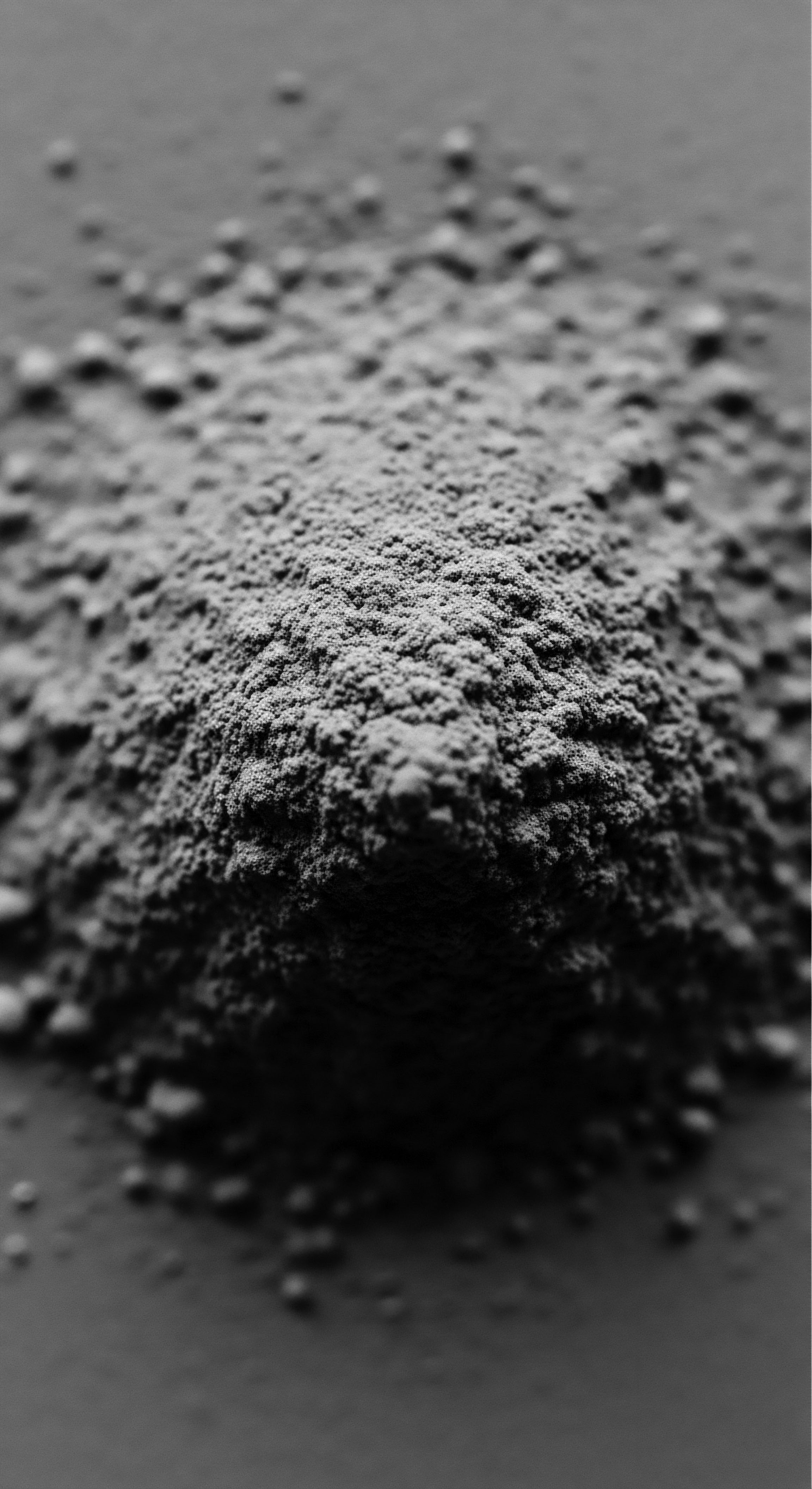
The Interplay of Cleansing and Protection
Protection for textured hair does not solely rest on conditioning; it begins with mindful cleansing. Traditional cleansing agents, often derived from plants, prioritized gentleness and preservation of the hair’s natural moisture barrier. African black soap, for instance, known as ‘ose dudu’ in Nigeria or ‘alata simena’ in Ghana, represents a time-honored West African tradition. Made from plantain skins, cocoa pods, shea butter, and palm tree leaves, it offers a gentle yet effective cleanse.
Unlike many modern cleansers that can strip hair of its vital lipids, African black soap cleanses without harshness, leaving the hair receptive to subsequent moisturizing and protective treatments. Its historical significance extends beyond hygiene; it is a product of communal effort, reflecting a sustainable approach to resource utilization. The ability of this soap to clear product buildup while respecting the hair’s natural oils makes it a cornerstone of traditional protective regimens.
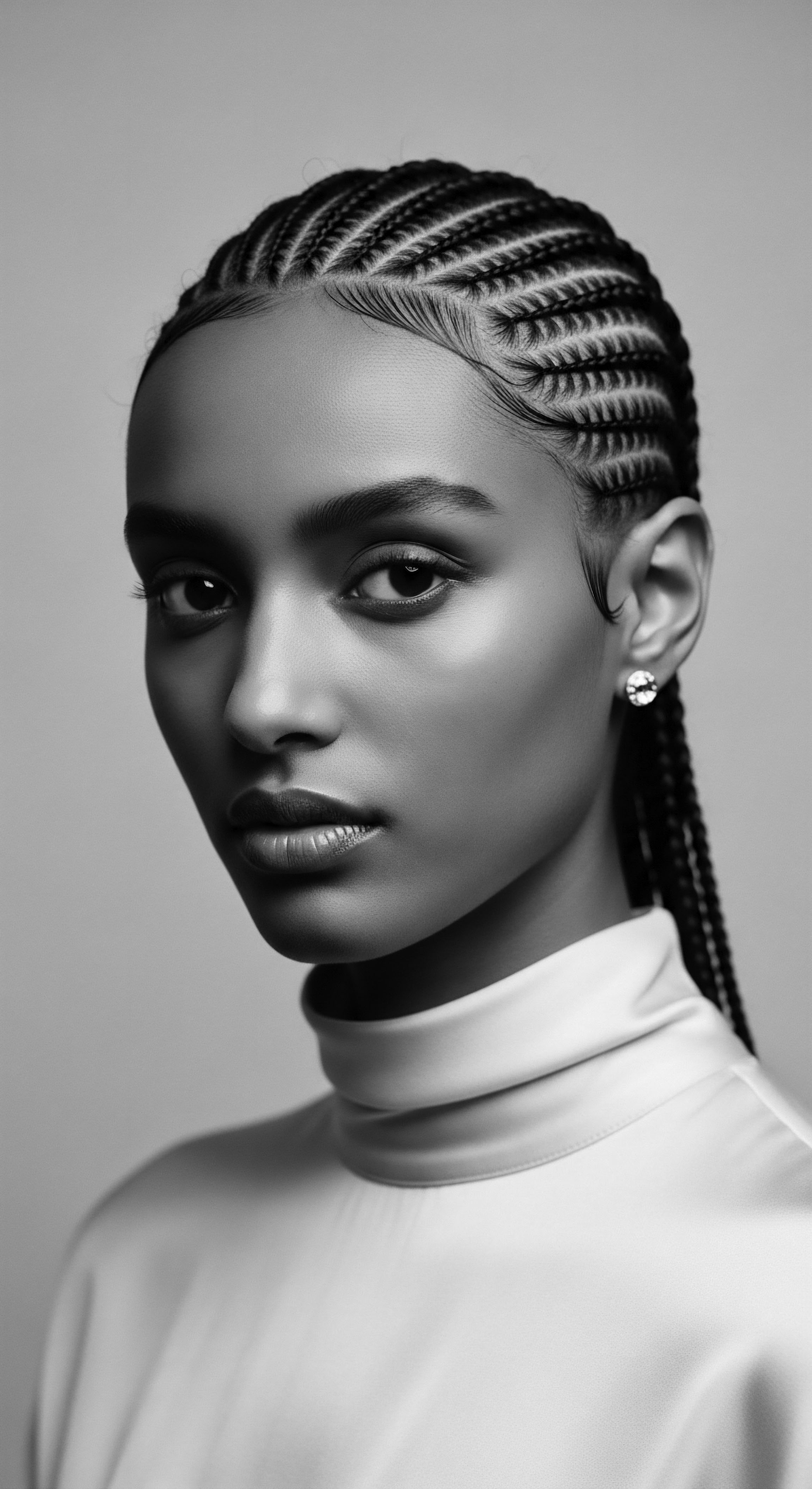
Herbal Infusions and Rinses
Beyond direct application of oils and butters, ancestral practices incorporated herbal infusions and rinses to condition and protect.
- Aloe Vera ❉ Used across various African and Indigenous cultures, aloe vera provides hydration, soothes the scalp, and offers regenerating properties. It helps reduce flaking and redness, contributing to a healthy scalp environment that supports hair growth and protection.
- Fenugreek ❉ An herb prized in ancient Egypt and Ayurvedic traditions, fenugreek seeds are rich in proteins and nicotinic acid. They strengthen hair, reduce dandruff, and stimulate scalp health, providing a foundation for robust hair strands.
- Rosemary ❉ While often associated with European traditions, rosemary’s use in hair rinses for shine and strength has a long history, stimulating scalp circulation and supporting hair growth.
These infusions, often simple to prepare, underscore the accessibility and efficacy of traditional protective methods. They demonstrate how readily available botanical resources were transformed into powerful elixirs, embodying a holistic approach to hair wellness that considered both the strand and the scalp. The continuity of these practices, often through oral tradition and lived experience, is a testament to their enduring value in safeguarding textured hair.
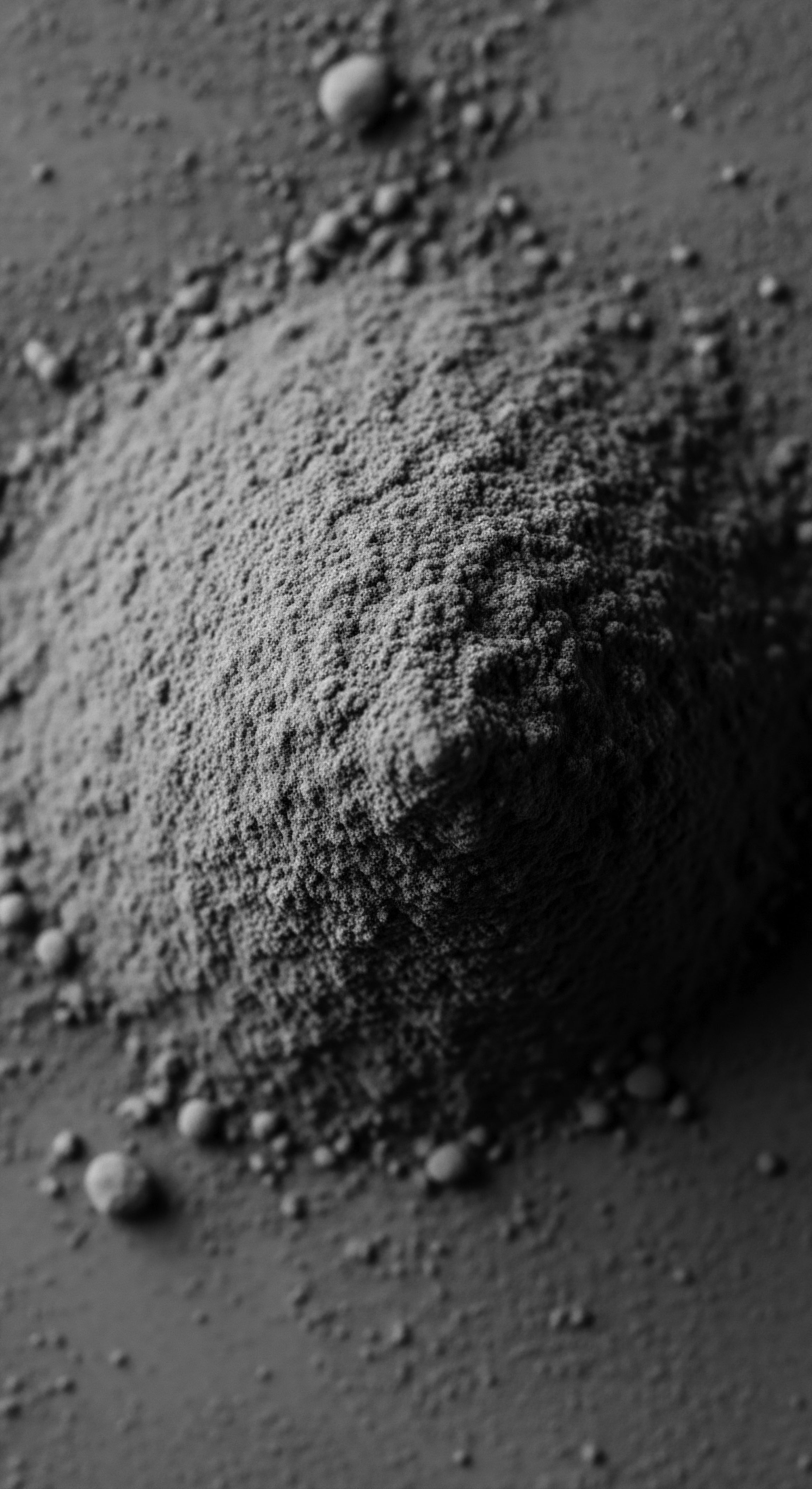
Relay
Our journey through the protective power of traditional ingredients now advances to a deeper, more interconnected understanding. We explore how these ancient practices, far from being relics of the past, actively shape cultural narratives and inform the future of textured hair care. The inquiry into what traditional ingredients protect textured hair unveils complexities where science, culture, and enduring heritage converge, offering profound insights into the resilience of Black and mixed-race hair traditions.
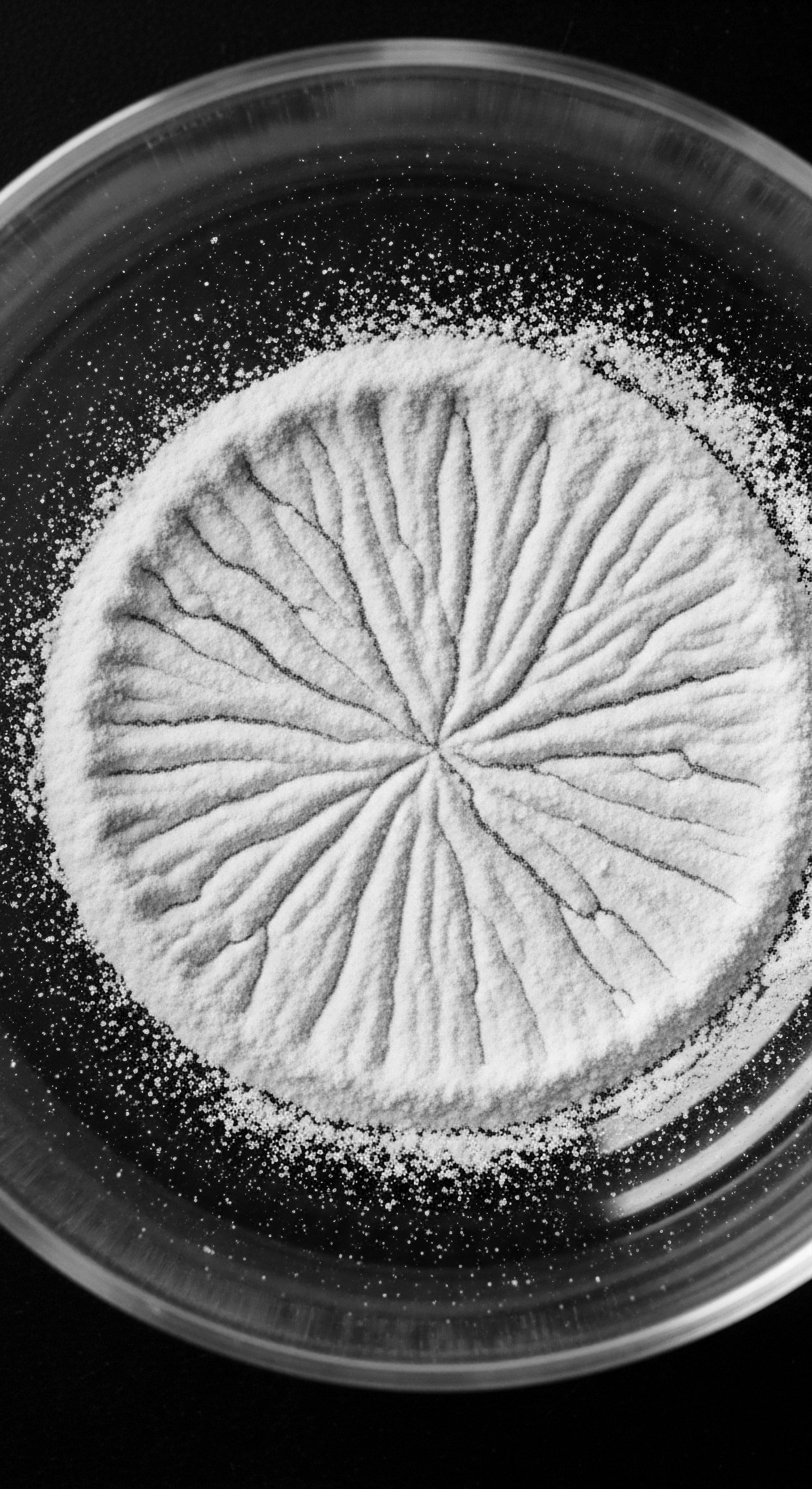
The Enduring Legacy of Protective Ingredients
The wisdom embedded in traditional hair care is not static; it is a dynamic inheritance, continuously reinterpreted and reaffirmed. The protective properties of ingredients like shea butter and chebe powder are not merely anecdotal; they are increasingly substantiated by contemporary scientific understanding, validating centuries of ancestral practice. This validation bridges the gap between empirical observation and molecular explanation, affirming the genius of those who first discovered these botanical allies.
Consider the lipid profile of shea butter. Its high concentration of fatty acids, including oleic and stearic acids, allows it to coat the hair shaft effectively, reducing protein loss and increasing elasticity. This molecular shielding mirrors the ancestral understanding of its protective barrier function against environmental aggressors.
Similarly, the ability of chebe powder to reduce breakage is linked to its unique composition that forms a flexible, protective layer around the hair, preventing the mechanical damage that often impedes length retention in coily hair types. This demonstrates how a simple, natural application can profoundly impact hair’s structural integrity.
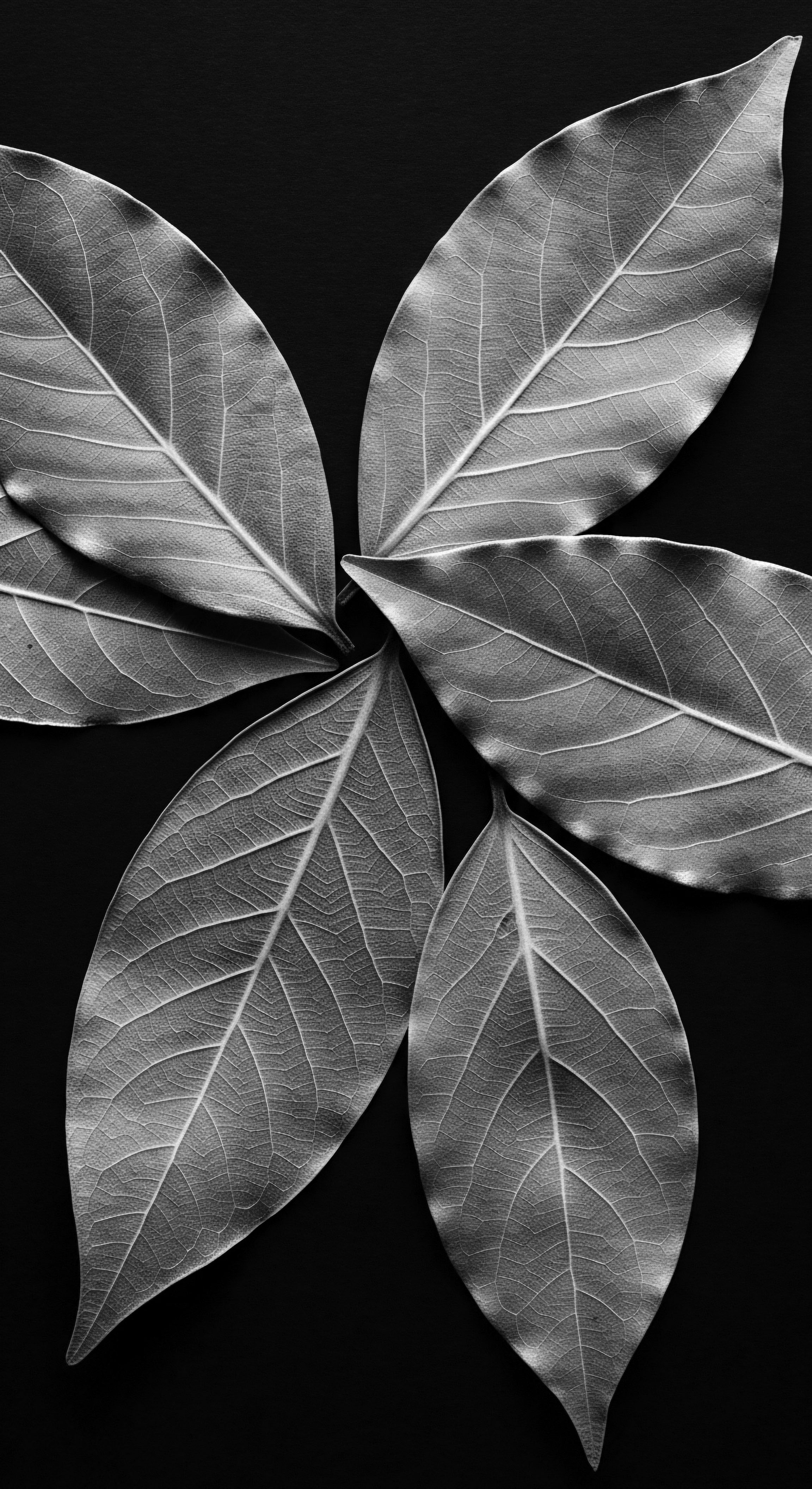
Historical Evidence of Protective Practices
The continuity of these practices is not just cultural; it is a historical fact. Emma Dabiri, in her work, highlights how hair braiding itself served as a technological device within sophisticated African knowledge systems, involving complex mathematical formulas and rhythmic movements. This intricate art of braiding, often requiring hours of communal effort, provided a protective framework for hair, reducing daily manipulation and shielding it from external elements. Within these protective styles, traditional ingredients played a critical role in maintaining hair health over extended periods.
For instance, in ancient Egypt, where hair was a symbol of status and vitality, castor oil was a staple for conditioning and strengthening hair. Egyptians blended it with honey and herbs to create masks that promoted growth and added shine. This practice, validated by its continued use today, illustrates a historical precedent for using natural emollients to maintain hair’s protective outer layer, the cuticle, against environmental drying. The presence of ricinoleic acid in castor oil is known to boost circulation to the scalp, further supporting healthy hair.
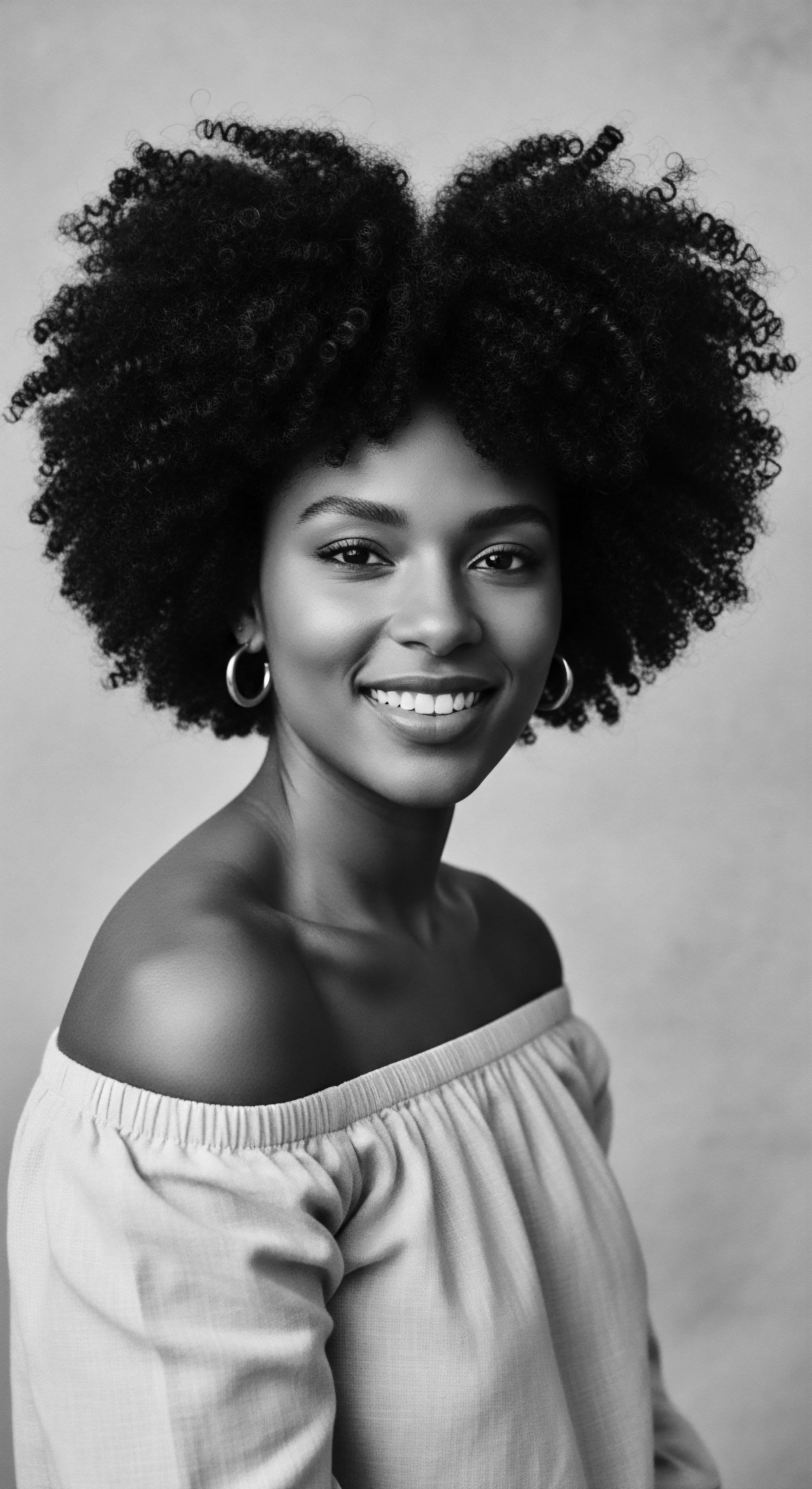
What Historical Hair Care Practices Were Validated by Science?
Many ancestral practices, once dismissed as folklore, are now finding their scientific backing. The deep conditioning achieved through traditional oiling practices, for example, is now understood through the lens of lipid penetration. Oils like coconut oil, with its smaller molecular structure and high lauric acid content, can penetrate the hair shaft, reducing protein loss during washing. This scientific understanding explains why generations have relied on it for strength and moisture.
The use of clays, such as Rhassoul clay from the Atlas Mountains of Morocco, for cleansing textured hair, also holds scientific merit. This mineral-rich clay effectively removes impurities and product buildup without stripping the hair of its natural oils, unlike harsh modern detergents. Its ability to absorb excess sebum while conditioning the hair demonstrates a sophisticated balance of cleansing and protection, preventing dryness and maintaining scalp health.
The enduring power of traditional ingredients lies in their ability to offer multi-faceted protection, often combining physical barriers with molecular nourishment, a wisdom passed through generations.
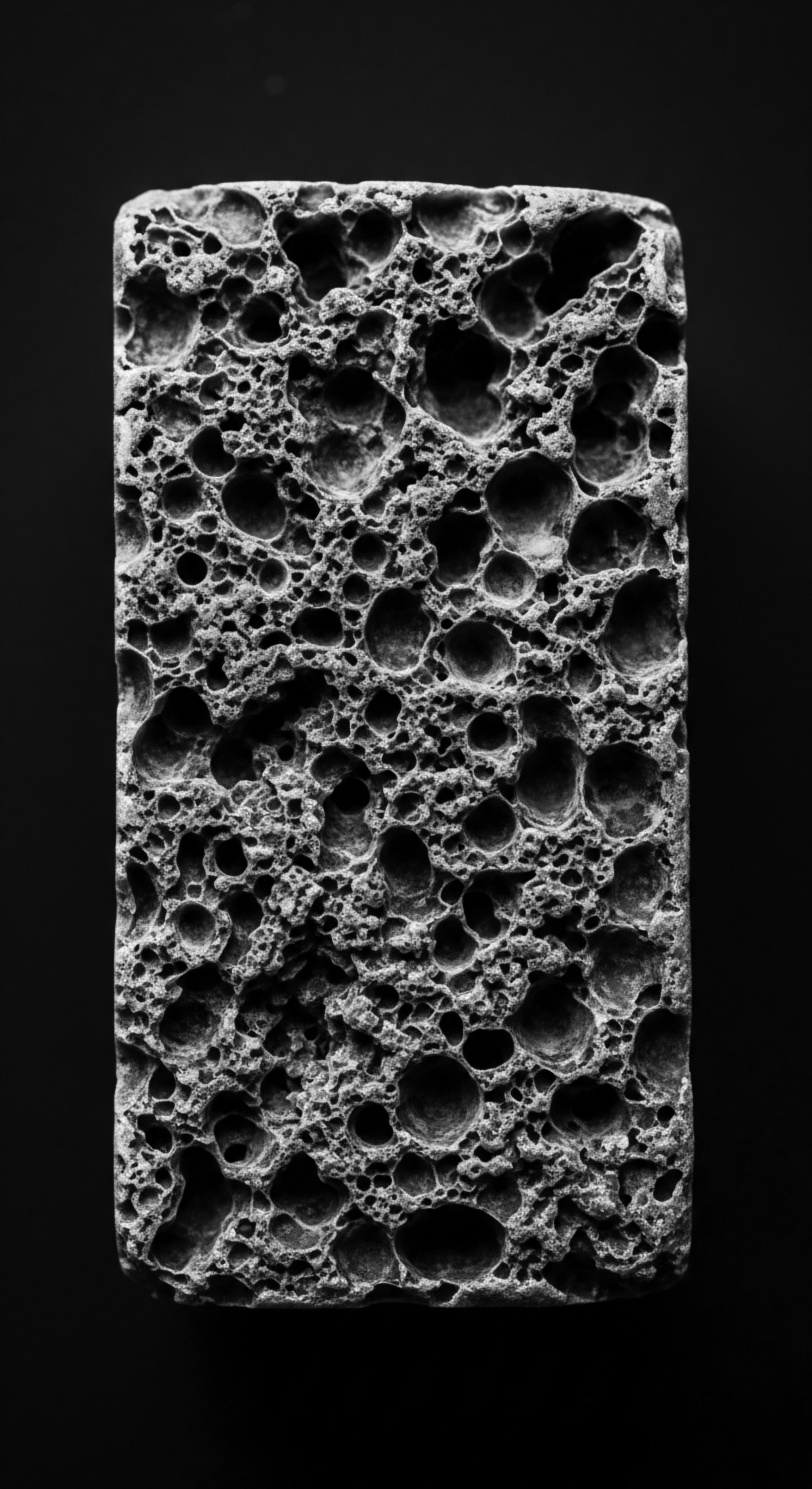
The Power of Plant-Based Proteins and Antioxidants
Beyond simple moisturization, traditional ingredients often provide proteins and antioxidants crucial for hair strength and environmental defense.
- Amla (Indian Gooseberry) ❉ A traditional Indian herb, amla is celebrated in Ayurvedic practices for its ability to strengthen hair, promote growth, and prevent premature graying. It is rich in vitamin C and antioxidants, which combat oxidative stress that can damage hair strands and scalp cells.
- Neem ❉ Extracts from the neem tree, particularly its leaves, have shown promising antioxidant and antimicrobial activities. Traditionally used for scalp issues like dandruff and lice, neem helps create a healthy scalp environment, which is fundamental for protected hair growth.
- Baobab Oil ❉ Sourced from the “Tree of Life” in Africa, baobab oil is rich in omega fatty acids and vitamins A, D, and E. It is prized for its ability to moisturize both skin and hair, improve elasticity, and aid in cell regeneration, offering robust protection against environmental damage.
These ingredients highlight a comprehensive approach to hair care that extends beyond surface-level aesthetics, addressing the hair’s internal health and its resilience against external pressures. The deliberate selection of these natural compounds, often based on observed efficacy over centuries, speaks to a deep ancestral understanding of phytochemistry and its application to textured hair.
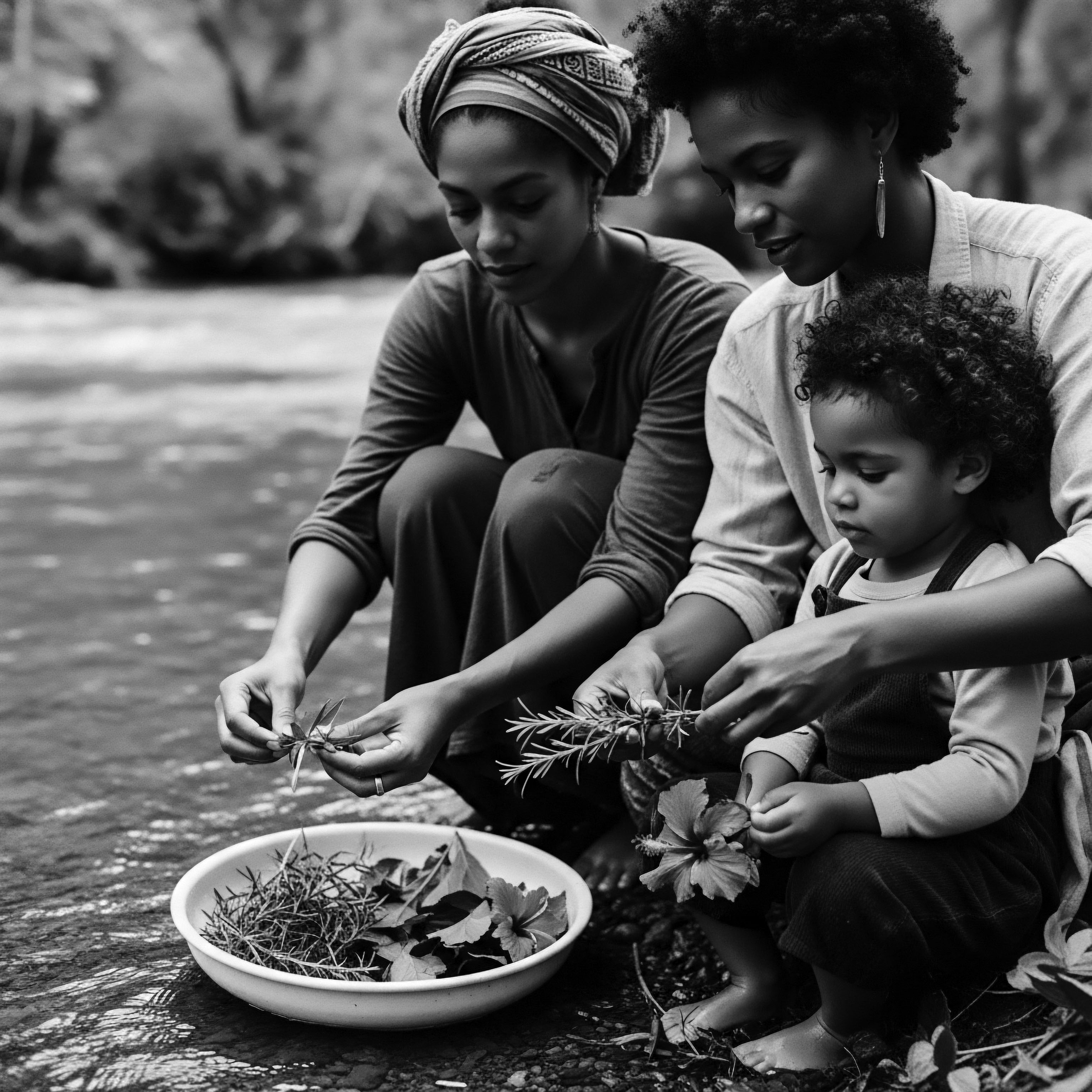
The Ancestral Imperative ❉ Hair as Cultural Artifact
Hair, especially textured hair, is more than a biological entity; it is a profound cultural artifact, a living testament to identity, resistance, and continuity. The practices surrounding what traditional ingredients protect textured hair are not isolated acts but are interwoven with broader narratives of Black and mixed-race experiences. During periods of enslavement and colonialism, traditional hair practices and the ingredients used were often suppressed or denigrated. Yet, despite immense pressure, these practices persisted, often as quiet acts of resistance and cultural preservation.
For instance, the continued use of ingredients like shea butter and the practice of protective styling, even under duress, served as a means to maintain a connection to African heritage and identity. This historical context elevates the protective function of these ingredients beyond the physical realm; they protected not only the hair itself but also the spirit and cultural memory of a people. The resilience of these traditions speaks volumes about their inherent value and the deep connection they represent to ancestral ways of being.
The deliberate choice to use traditional ingredients today is a conscious act of reclaiming and honoring this heritage. It is a recognition that the answers to contemporary hair challenges often reside in the timeless wisdom of the past, passed down through generations. This is the ultimate relay ❉ the transmission of knowledge, practice, and spirit, ensuring that the legacy of textured hair care continues to thrive.

Reflection
As we conclude this exploration into what traditional ingredients protect textured hair, we find ourselves standing at a luminous crossroads, where the echoes of ancestral wisdom meet the quiet hum of modern understanding. The journey has revealed that the care of textured hair is not a fleeting trend but a profound, enduring meditation on heritage itself. Each strand carries the whispers of those who came before, a living archive of resilience, ingenuity, and beauty.
The ingredients discussed—from the rich embrace of shea butter to the ancient shield of chebe powder, the gentle cleanse of African black soap, and the revitalizing touch of ancestral oils—are more than mere compounds. They are custodians of cultural memory, vessels of intergenerational knowledge, and affirmations of identity.
The protective qualities of these natural gifts are not just about preventing breakage or sealing moisture; they are about preserving a lineage, honoring the ingenuity of those who cultivated solutions from the earth, and affirming the inherent worth of textured hair in all its varied forms. Roothea’s ‘Soul of a Strand’ ethos reminds us that every act of care, every intentional application of these traditional elements, is a continuation of a living library. It is a commitment to the past, a grounding in the present, and a hopeful step into a future where the heritage of textured hair is celebrated, understood, and cherished without reservation. This continuous relay of wisdom ensures that the radiant narrative of textured hair remains unbound, vibrant, and ever-present.
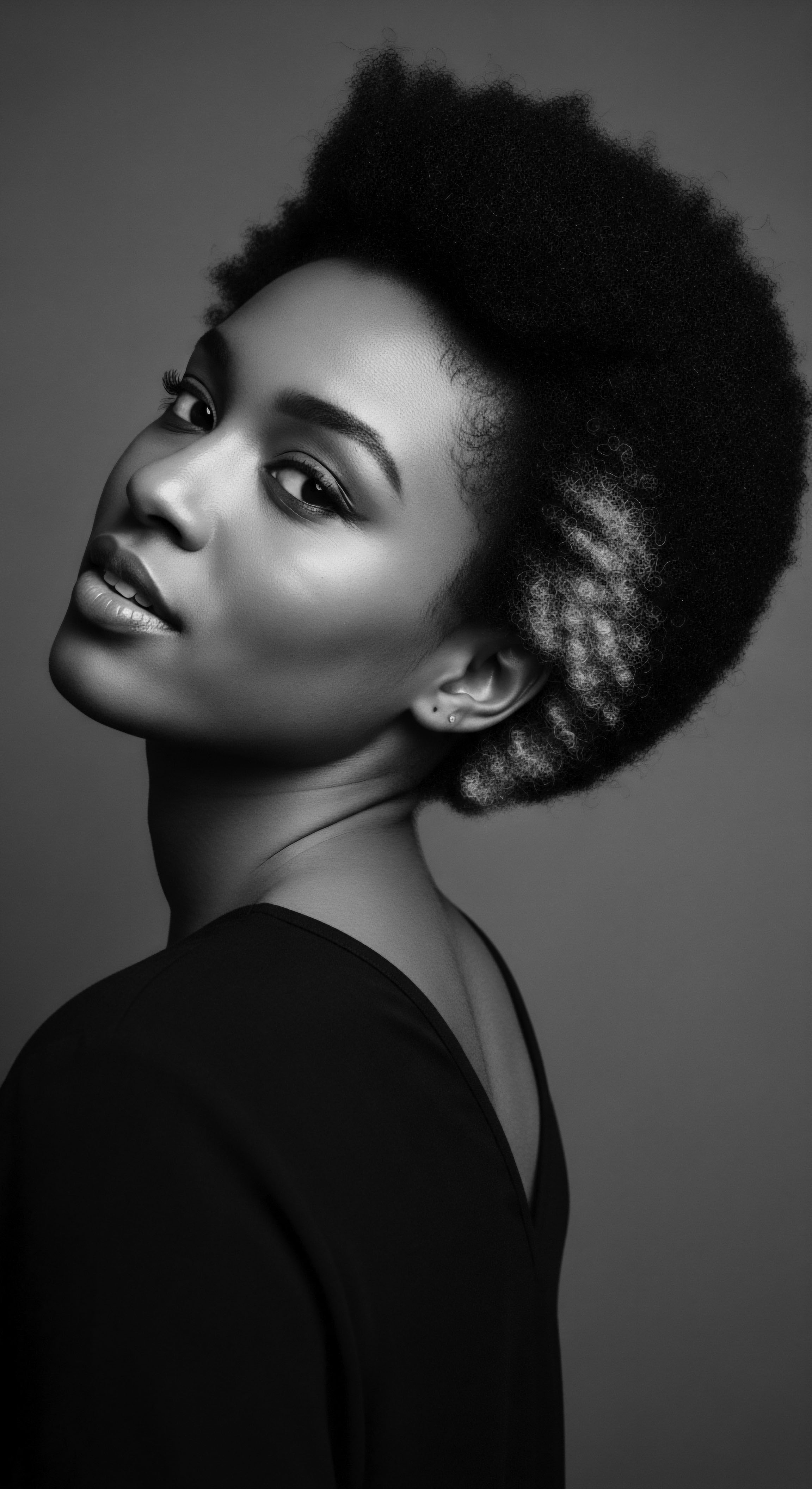
References
- Byrd, A. D. & Tharps, L. L. (2001). Hair Story ❉ Untangling the Roots of Black Hair in America. St. Martin’s Press.
- Dabiri, E. (2019). Twisted ❉ The Tangled History of Black Hair Culture. Harper Perennial.
- Diop, C. A. (1974). The African Origin of Civilization ❉ Myth or Reality. Lawrence Hill Books.
- Gordon, M. (2008). Ghostly Matters ❉ Haunting and the Sociological Imagination. University of Minnesota Press.
- Kerharo, J. & Adam, J. G. (1974). La Pharmacopée Sénégalaise Traditionnelle ❉ Plantes Médicinales et Toxiques. Vigot Frères.
- Omotos, A. (2018). The Importance of Hair in Ancient African Civilizations. Journal of Pan African Studies.
- Rajan-Rankin, S. (2021). Racializing the Body ❉ Embodiment, Race and Identity. Palgrave Macmillan.
- Tarlo, E. (2016). Entanglement ❉ The Secret Lives of Hair. Oneworld Publications.
- White, L. (2000). Speaking with Vampires ❉ Rumor and History in Colonial Africa. University of California Press.
- Akanmori, E. (2015). The Cultural Significance of African Hairstyles. (Unpublished master’s thesis). Kwame Nkrumah University of Science and Technology.
- Falconi, C. (2015). Shea Butter ❉ A Natural Skin and Hair Care Product. International Journal of Cosmetic Science.
- Kearney, L. (2017). The Science of Black Hair ❉ A Comprehensive Guide to Textured Hair Care. Self-published.
- Quinn, C. R. Quinn, T. M. & Kelly, A. P. (2003). Hair care practices in African American women. Cutis, 72(4), 280-289.
- Rooks, N. M. (1996). Hair Raising ❉ Beauty, Culture, and African American Women. Rutgers University Press.
- Tate, S. (2007). Black Beauty ❉ African American Women and the Politics of Race and Identity. Ashgate Publishing.
